
Imagine you’re walking down the street and come across various homeless and poor people. One of the possible reactions you’ll have is, “If only there were something I could do to help them.” Well, you are not alone in thinking that. Various people believe the same, but don’t know how to do it. That’s where the nonprofit organizations come in, which raise funds and spend them among those in need.
But if you’re running a nonprofit organization, how will you find willing donors who want to support humanity? Or, even if a donor has found you, how can you stand out to gain the trust of these donors? After all, as per the numbers shared in 2024 by the IRS, there are over two million registered non-profit organizations.
One of the easiest ways to stand out is to simplify the donation process, making it less time-consuming. That’s where online forms can do the trick for you. Today, we’ll discuss potential challenges you can face when raising funds and how online forms can help you bridge the gap between the non-profit organization and the donor.
Before talking about how online forms can make the donor’s experience smoother, let’s consider potential challenges that you, as a non-profit organization owner, might face with the traditional method.
Finding the physical forms of donors in the piles of paper and manually entering the potential donors’ details yourself can be extremely time-consuming. And, to make things worse, this manual process is prone to error. According to a study, data entry mistakes can occur in 25% of cases. All these issues combined can do nothing but lose donors to other non-profit organizations.
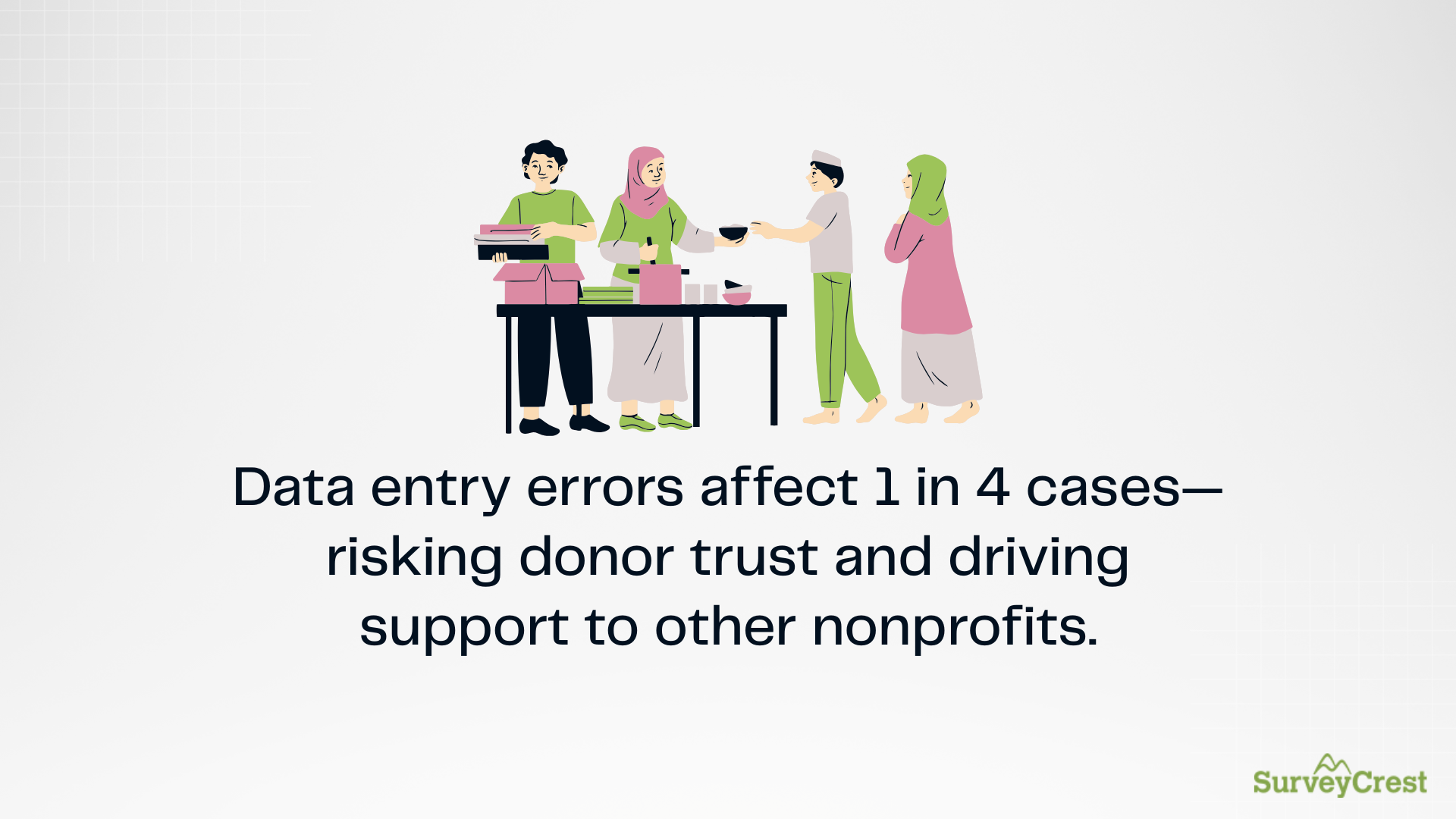
Manual data entry has a 25% chance of error, risking the donors’ trust
Do you only want donors who can physically visit your office, get details, fill in a form, and perform other responsibilities? Or do you want to expand your donor base in different cities or even countries? By having a physical procedure, you’re only limited to local and limited donors. If we look at the numbers, there was an 11% increase in revenue for organizations using online methods.
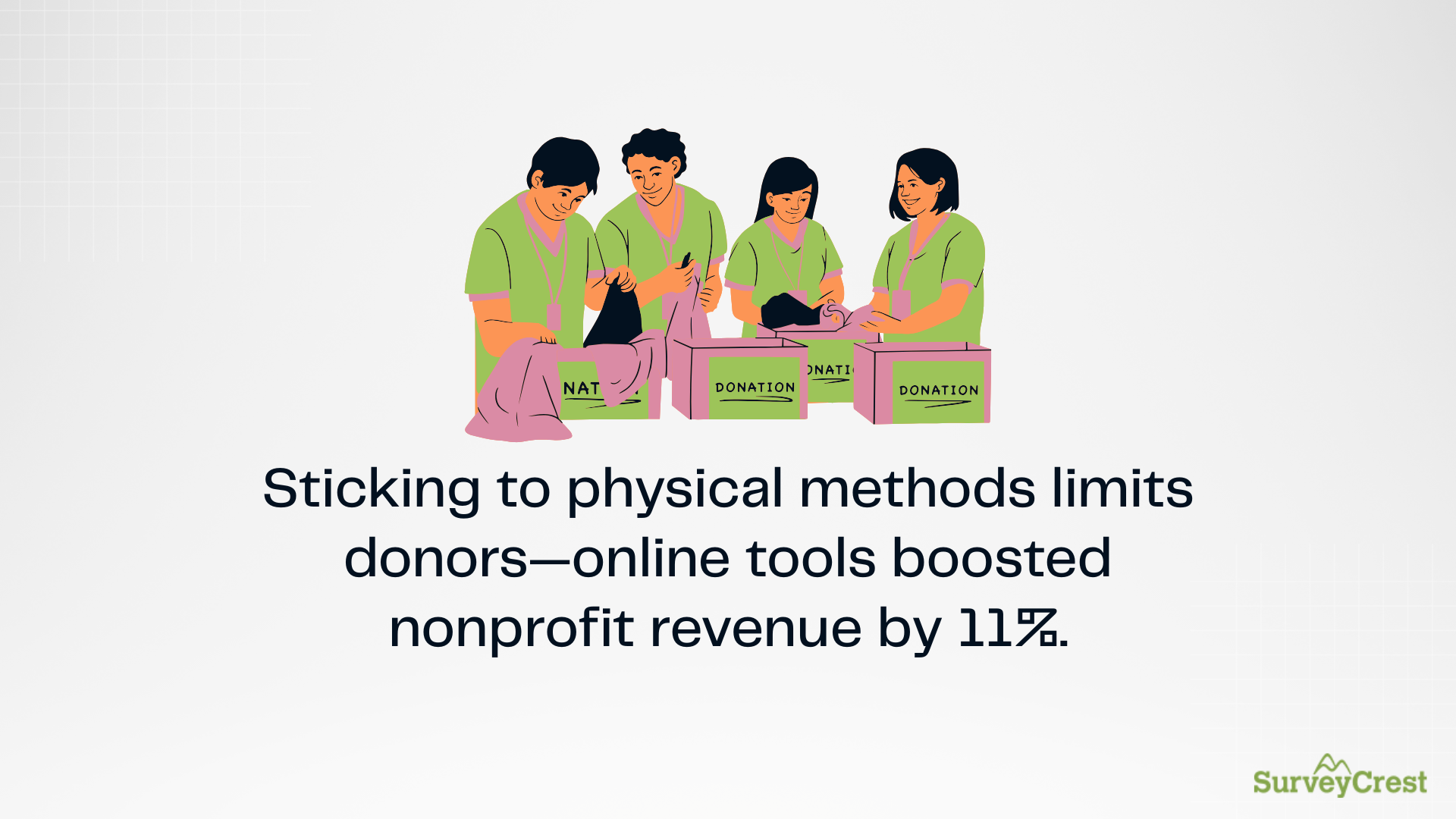
Using online tools have boosted the revenues of non profits by 11%
With the world getting busier, even those willing to donate may not have the time to visit the office and go through extensive processes. As per the recent trends, 50% of the people prefer making online donations, while according to a report in 2021, 42% of the total donations in the past three years have been online. Seeing these numbers, many initially hesitated non-profit organizations have started adopting digital technology to raise funds.
Now, let’s look at how online forms can be beneficial for raising funds.
Instead of making the extra effort of coming to your office, imagine if people could donate with a couple of touches on their phones. Around 57% of the non-profit website traffic comes from mobile and tablets. That’s where they can access your online form, fill in their details, and get the donation instructions.
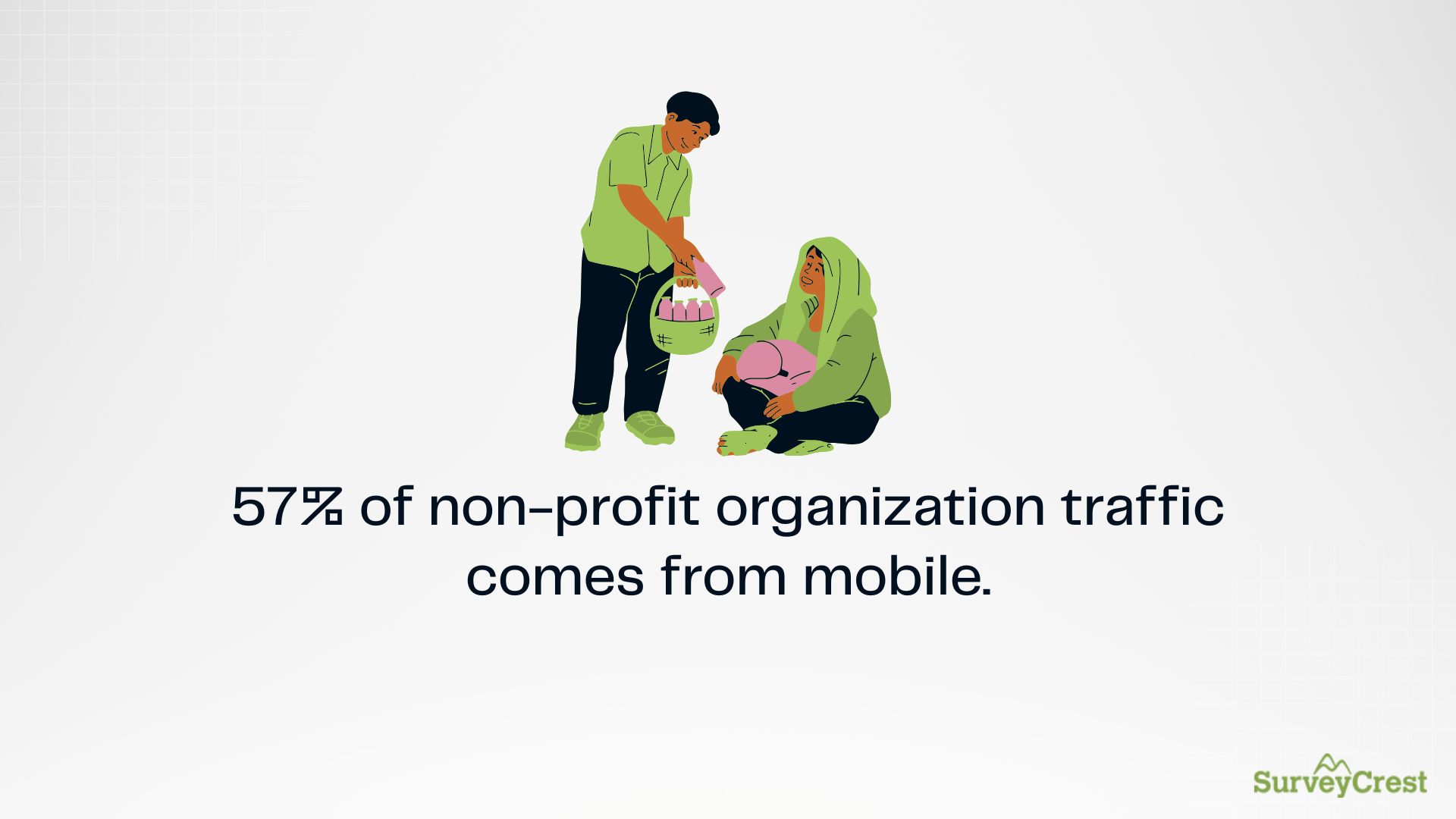
57% of the people looking for non-profit organizations come from a mobile phone
No need to have a team of people recording each and every detail, including the amount donated by the donor. Forms usually have their own databases, which save all the information for whenever you want to access it.
Want to strengthen the brand identity of your non-profit organization? You can do that by personalizing your online form by adding logos, using fonts, and applying other branding materials to build authenticity with the donors.
Pro Tips: Want to plan an event? Here are the steps to conduct a survey to ensure it goes smoothly.
When you’re opting for an online form to raise funds, here are a few things you need to ensure.
Remember, even if people trust you, they may hesitate to donate to an unfamiliar payment gateway. That’s why make sure to use reliable methods to accept donations. Some of the payment gateways most people trust include Stripe, PayPal, and Google Pay. Cryptocurrency channels are another way to accept donations, as donors show faith in them. In 2024, over a billion dollars’ worth of donations have come through these crypto channels.
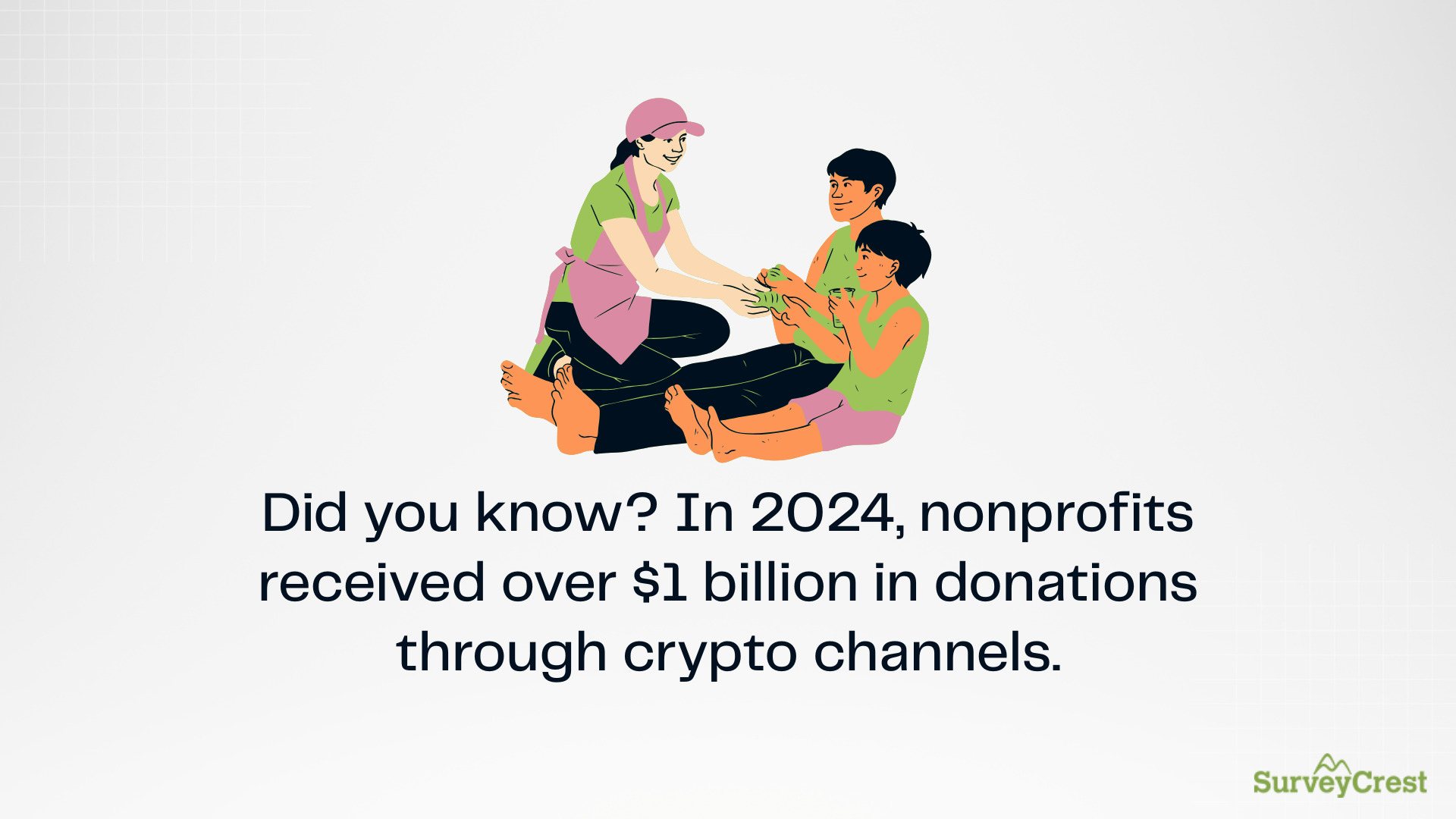
In 2024, $1 billion was donated to nonprofits through crypto channels
Yes, we’ve already discussed that a great number of the nonprofit organization’s website traffic comes from mobile devices. What that number doesn’t tell us is the type of device the donors would be using. You may have potential donors accessing the online form through various devices. While some may use an Android phone, others might open the online form on their iPhones or iPads.
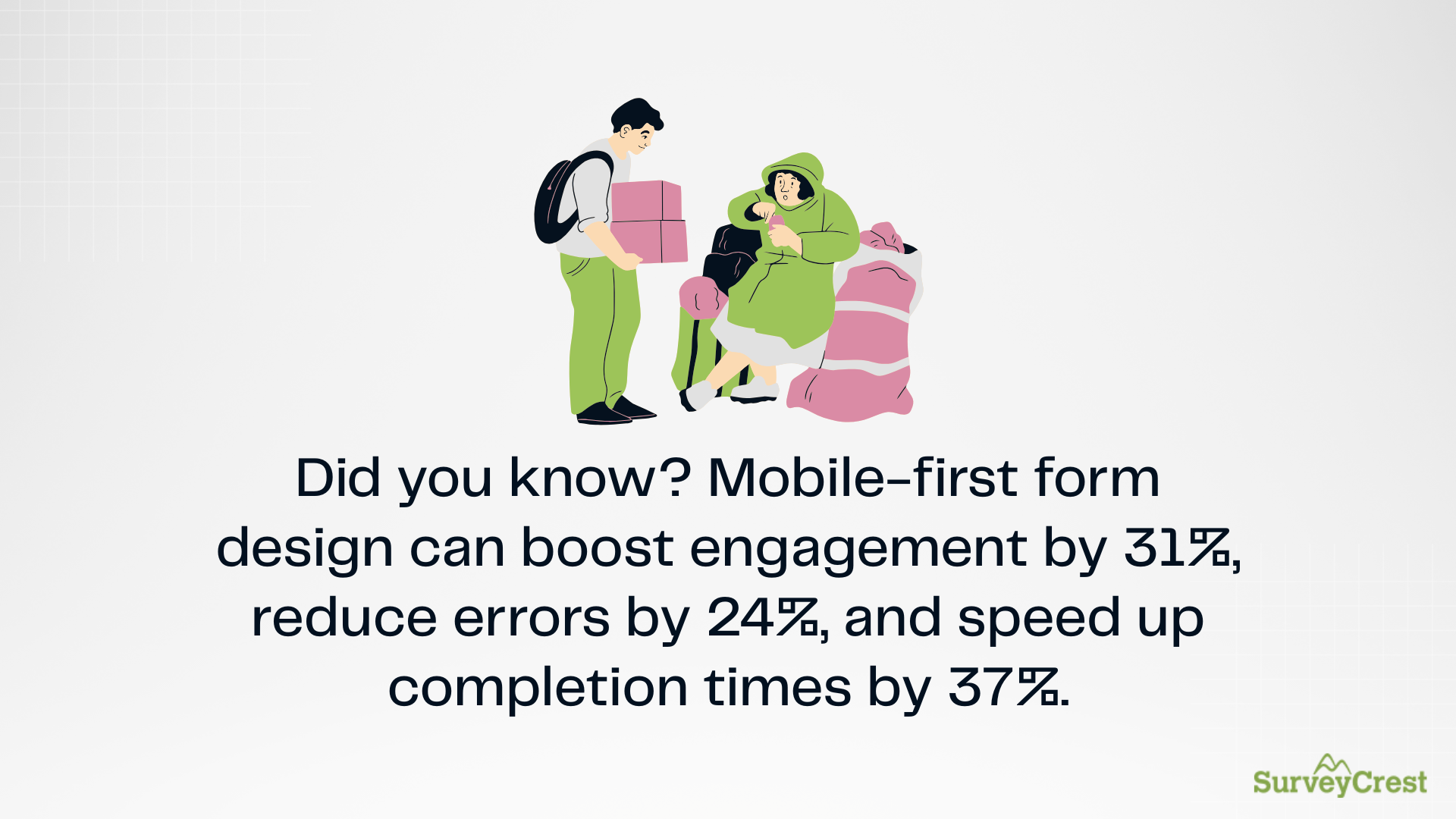
Mobile-first forms can boost engagement by 31% and reduce errors by 24%
After a person donates through the online form, your affiliation with them doesn’t have to end. You have found someone with the passion and resources to give to those in need. You’d ideally want to retain them for future donations, and these efforts should start when they’ve filled out the form.
At the end of the form, you can include a personalized message, thanking them for donating, giving them a receipt, or encouraging them to make future donations. This can be anything to help them keep your non-profit organization in mind the next time they’re looking to donate.
Also explore: To understand your donors better, create and conduct an online survey.
After looking at the features that can make your online form successful, here’s what exactly needs to be inside it.
When creating questions and adding details on the online form, remember that your donor will probably be busy with their day-to-day activities. So, instead of having a long and extensive form (that can deter donors), only have essential questions.
You can also use the “required field” option, where donors can skip the optional information, which can be collected later. This will give the donors the impression that you value their time instead of asking unnecessary questions that can be skipped.
To ensure the donors’ smooth journey, there should be clear calls to action about what they need to do. Start with clear placeholder text that tells the donors what to enter. Whether it’s the input formats or giving examples of the required information, these placeholders can make it easier for donors to fill out the form quickly.
Once the donor has filled in all the necessary information and details, add a call to action text on the submit button that’s direct and engaging. You can go for something like Donate Now or Join the Cause. These action-focused calls to action can be much better than the generic Click Here or Submit.
Unlike businesses, which do persona research on potential consumer behaviors, your donors can be in different parts of the world with different preferences. That’s why it’s essential to test the responses by designing online forms with various layouts, color schemes, button text, number of fields, and more. By making the tweaks and adjustments, you’ll eventually find the right recipe that suits your donors.
Apart from all the good things that can be done with online forms, here are some risks donors are wary of when filling an online form.
With the amount of traffic on social media, many fake non-profit organizations ask people to donate money. Some even pretend to be reputable non-profit organizations to get money from the pockets of people who think they’re donating to the cause. As per reports by the FTC, Americans lost $12.5 billion because of scams.
Suppose the website does not have an SSL certificate, CAPTCHA, or a third-party verification on the website (where your online form is). In that case, the donors may feel insecure about their data safety. That’s why, when you’re developing a website, use these features to prevent spoofing and gain the donors’ trust.
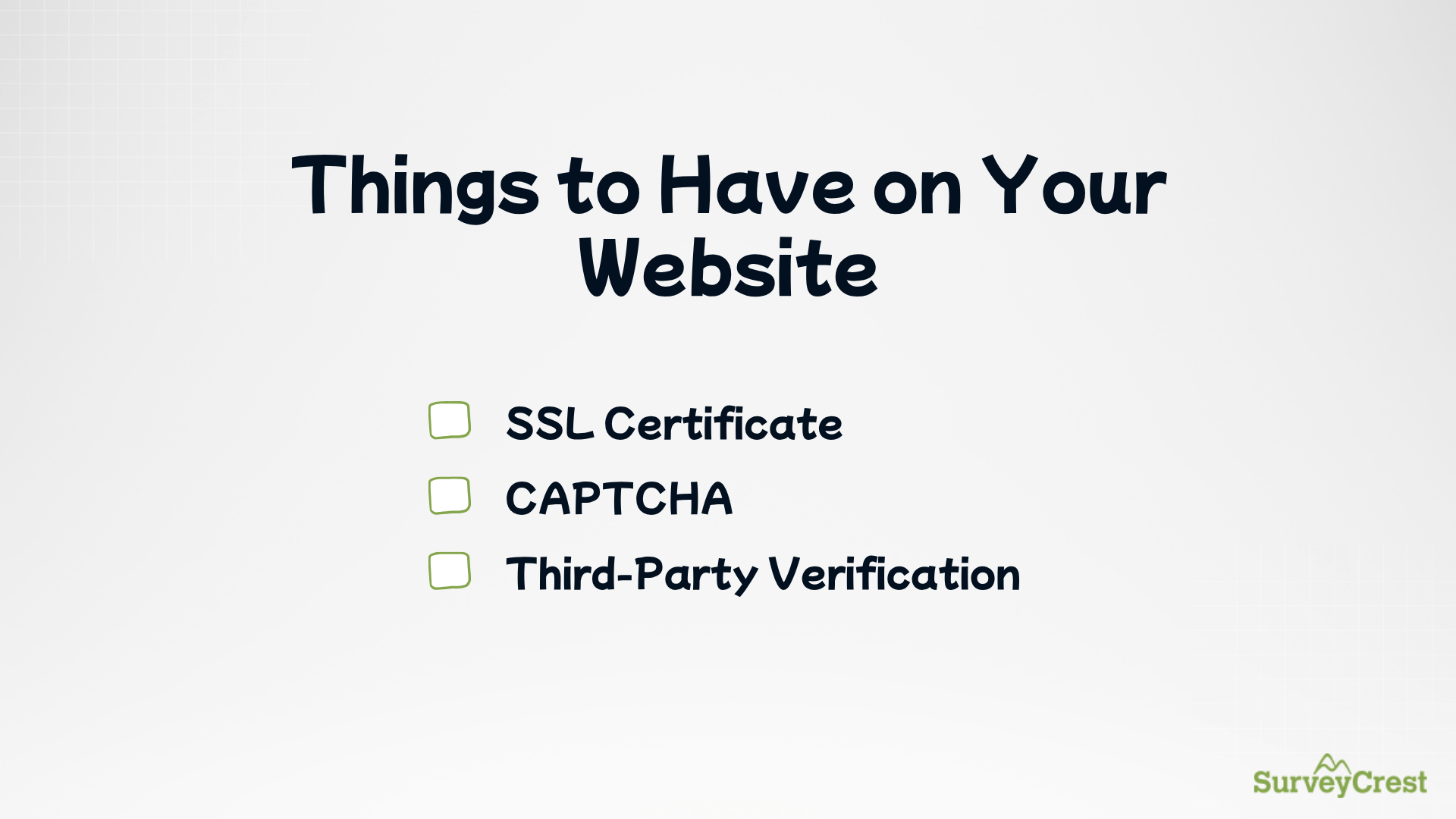
Websites should have an SSL certificate, CAPTCHA, and a third-party verification
If the terms are not clearly highlighted, people might hesitate to enter their payment details or proceed with the donations. Where will the donation go? Will it be a recurring payment? What has been the impact of previous donations? Those are some of the many questions that the donors will have on their minds. Answering them through your website or other communication methods can increase the trust for more donations.
If you want to attract donors and encourage them to make donations, generic, physical forms, and methods might not do the trick. With personalized online forms, you can make it easier for donors to give money for the cause of making the world a better place.
It’s time to get yourself recognized in the world as a reliable non-profit organization and reach people who are in need of your support. Build your online survey today!
Kelvin Stiles is a tech enthusiast and works as a marketing consultant at SurveyCrest – FREE online survey software and publishing tools for academic and business use. He is also an avid blogger and a comic book fanatic.